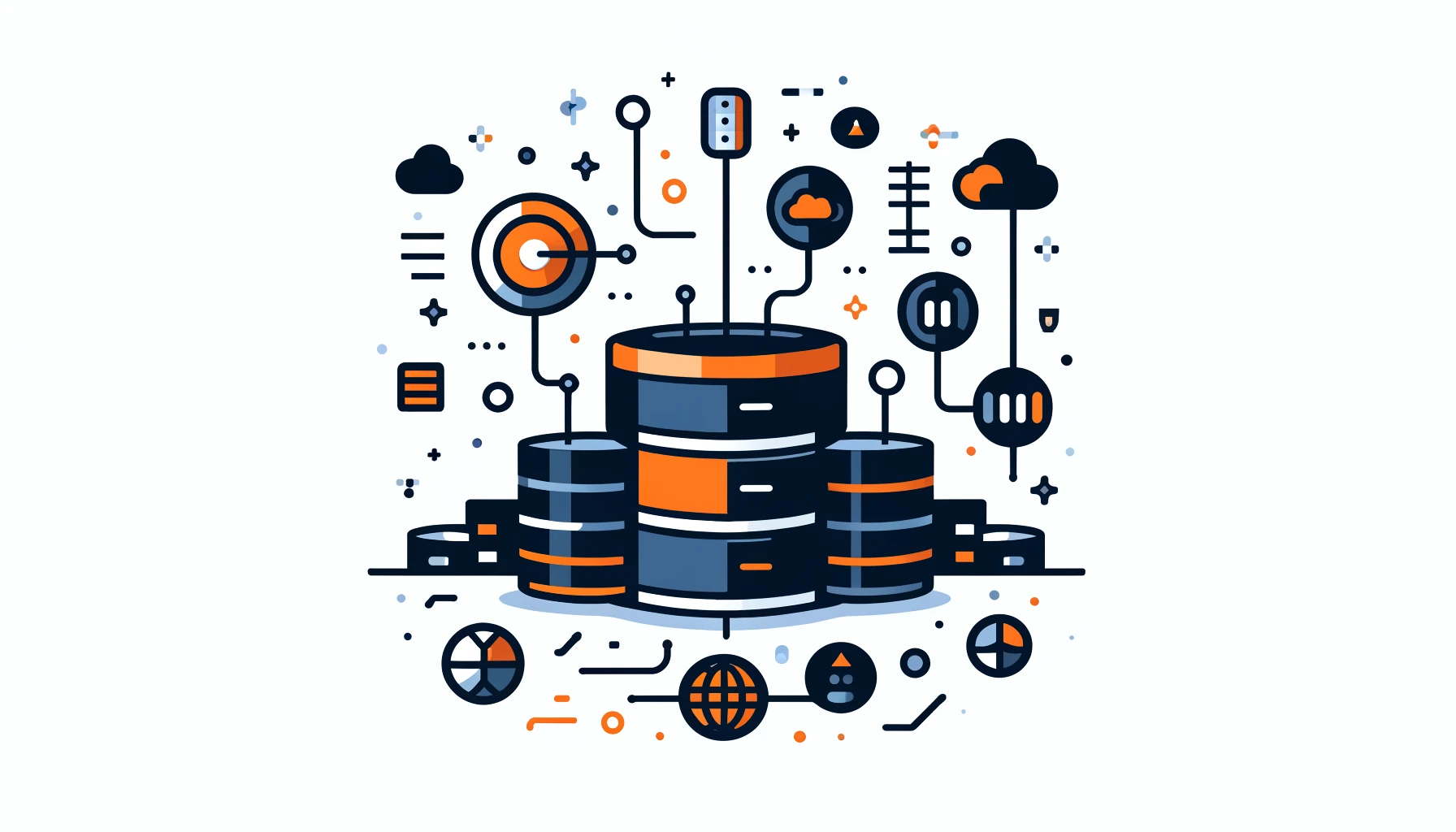
Master Data Management: The Fundamentals of MDM

In today’s data-driven world, organizations are grappling with an ever-increasing volume, variety, and velocity of data. This data deluge presents both opportunities and challenges, particularly in maintaining data quality, consistency, and accuracy across multiple systems and applications.
This is where Master Data Management (MDM) comes into play.
Master Data Management (MDM) is an important strategy for organizations. It helps them create a single, reliable, and authoritative view of their most important data assets.
People often call this view the “golden record.” This article will discuss the basics of MDM. Article explains the key components of MDM and how organizations can implement it using various software tools.
What is Master Data Management?
Master Data Management (MDM) is a method that helps organizations create and maintain accurate data. It involves processes, policies, and technologies. The goal is to have a reliable source of master data within the organization.
Master data is the important data that is essential for an organization’s operations and decision-making processes. This includes data related to customers, products, suppliers, employees, and other key entities.
The primary goal of MDM is to ensure that organizations have a single, accurate, and consistent view of their master data across the entire enterprise. By establishing standardized processes and governance policies, MDM helps to eliminate data inconsistencies, redundancies, and inaccuracies that may exist within different systems and departments. This enables users to access and utilize high-quality master data that can be trusted for making informed business decisions.
In addition to processes and policies, MDM also involves the use of advanced technologies such as data integration, data quality management, data governance, and data stewardship tools. These technologies play a crucial role in facilitating the consolidation, cleansing, and enrichment of master data, as well as in ensuring its ongoing maintenance and synchronization across various systems and applications.
Overall, Master Data Management is a strategic initiative that enables organizations to unlock the full potential of their data assets, improve operational efficiency, enhance customer experiences, and drive better business outcomes. By establishing a solid foundation of reliable master data, organizations can achieve greater agility, competitiveness, and innovation in today’s data-driven business environment.
MDM aims to maintain accurate, consistent, and up-to-date master data across all systems and applications.
The MDM Workflow
The MDM workflow typically involves the following steps:
- Data discovery is the process of identifying and locating master data across various systems and applications within an organization. This involves understanding where data is stored, how it is structured, and how it is being used. By conducting data discovery, organizations can gain insights into their data landscape, identify potential data quality issues, and ensure that they have a complete and accurate view of their data assets.
- Data discovery is essential for organizations looking to improve data governance, compliance, and decision-making. It allows them to understand the relationships between different data sets, identify redundant or outdated data, and ensure that data is being used in a consistent and meaningful way across the organization.
- In order to effectively conduct data discovery, organizations may use a variety of tools and techniques, such as data profiling, data lineage analysis, and metadata management. These tools can help organizations to automate the process of identifying and locating master data, making it easier to manage and govern their data assets effectively.
- Overall, data discovery is a critical step in the data management process, helping organizations to unlock the value of their data and make more informed decisions based on accurate and reliable information.
- Data Integration: Extracting, transforming, and loading (ETL) master data from multiple sources into a centralized repository.
- Data Quality: Cleansing, standardizing, and validating master data to ensure accuracy and consistency.
- Data Governance: Establishing policies, procedures, and roles for managing master data throughout its lifecycle.
- Data Stewardship: Assigning ownership and accountability for maintaining the quality and accuracy of master data.
- Data Distribution: Synchronizing master data across all consuming systems and applications.
MDM Software Tools
There are several software tools available in the market that can help organizations implement MDM effectively. Here are some examples:
- The Informatica MDM Platform helps organizations create a unified and reliable view of their master data. It is a powerful tool that assists in establishing a cohesive representation of data. This platform ensures that organizations can trust the accuracy and consistency of their data. It provides capabilities for data modeling, data integration, data quality, and data governance.
- Talend Data Integration is a powerful tool used for ETL processes. It helps organizations to extract, transform, and load data from different sources. The system stores the data in a central repository. It supports a wide range of data formats and provides a user-friendly interface for designing data integration workflows.
- The IBM InfoSphere Information Analyzer helps organizations find data quality issues and inconsistencies. It does this through data profiling and quality assessment. The tool provides many data quality rules and metrics. These can be customized to meet the specific requirements of any business.
- Collibra Data Governance is a tool that helps organizations manage data governance in the cloud. It allows users to create, control, and track data governance rules and processes. The platform streamlines data management and ensures compliance with regulations. It provides a centralized repository for storing data definitions, business rules, and data lineage information.
- Users utilize the SAS Data Management tool for data matching and deduplication. It helps organizations find and fix duplicate records in different data sources. It uses smart technology to find and combine duplicate records, making sure the main record is correct and current.”
- Metadata Management Tool: Informatica Metadata Manager Informatica Metadata Manager is a tool that enables organizations to capture, manage, and govern metadata across the enterprise. It stores metadata in one place and allows users to search, browse, and analyze it to understand their data better.
- Orchestra Networks EBX is a Data Mastering Tool that helps organizations manage and organize their important data effectively.
- Data Stewardship Tool: Ataccama ONE Data Stewardship is a tool that helps data stewards collaborate and effectively manage master data. It provides a user-friendly interface for data stewards to review, approve, and correct master data records.
- The Alation Data Governance Platform helps organizations set and enforce data governance policies throughout the entire enterprise. It provides a centralized repository for storing data definitions, business rules, and data lineage information.
- Reltio Cloud is a cloud-based solution for Master Data Management (MDM). It helps organizations consolidate and manage their data in one reliable platform. It provides capabilities for data integration, data quality, data governance, and data analytics.
The Golden Record
The golden record is like the best version of a piece of data. It has the most correct and newest information about something, like a customer or product. To create a golden record, data is gathered from various sources, reviewed for accuracy, and errors are corrected.
For example, think about a store that sells things in many ways: in person, online, and through apps. The store may have customer information stored in various places such as the cash register, online store, or customer list. Each place might have slightly different details about the same person, like their name or address.
Using the MDM process, the store can make a golden record for each customer. This golden record has the most right and newest info about the customer. The main source of customer information is used for all store systems. This helps ensure consistency and accuracy when interacting with customers or analyzing data.
Conclusion
Master Data Management is a critical approach that enables organizations to create a single, trusted view of their core data assets. By implementing MDM effectively, organizations can improve data quality, reduce data inconsistencies, and enable better decision-making across the enterprise. The MDM workflow involves several steps, including data discovery, data integration, data quality, data governance, data stewardship, and data distribution.
Several software tools available in the market that can help organizations implement MDM effectively.
